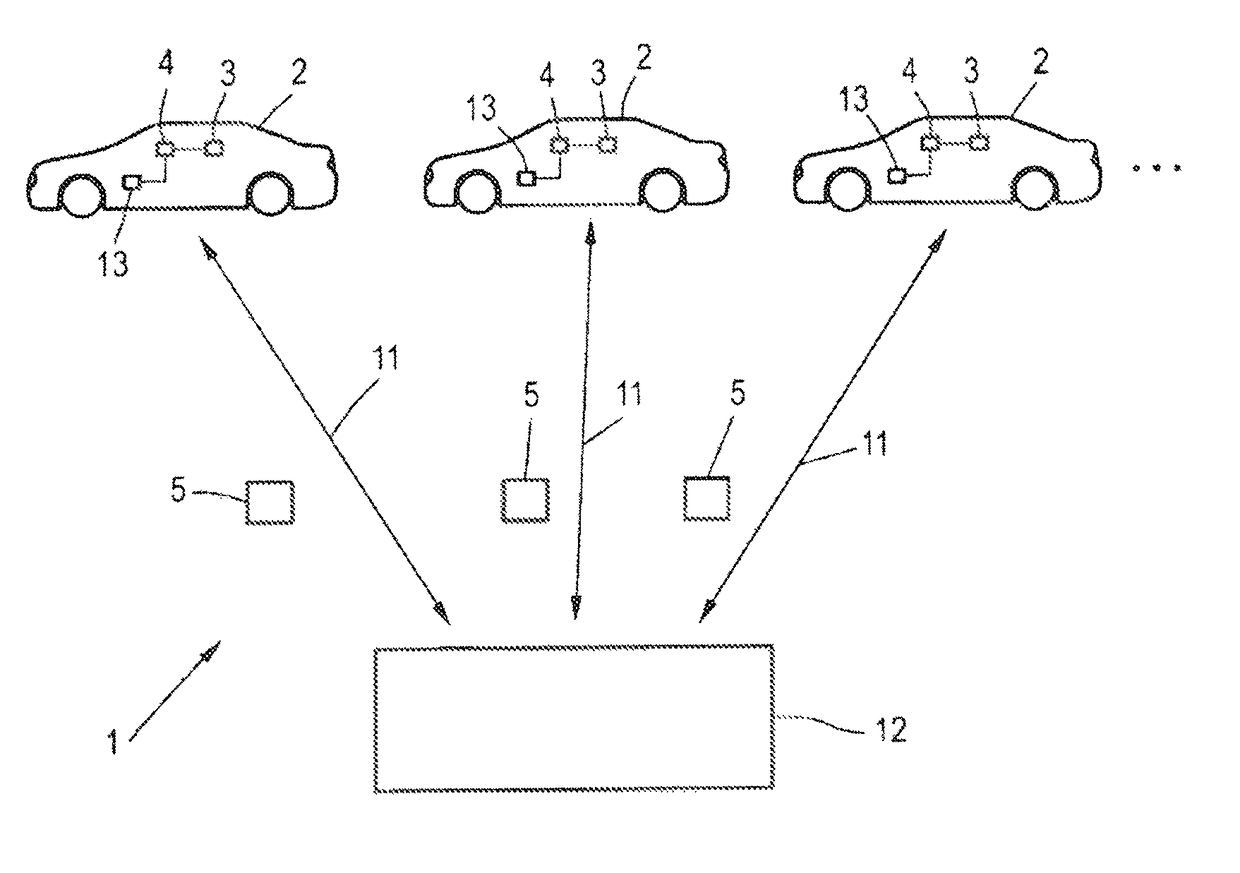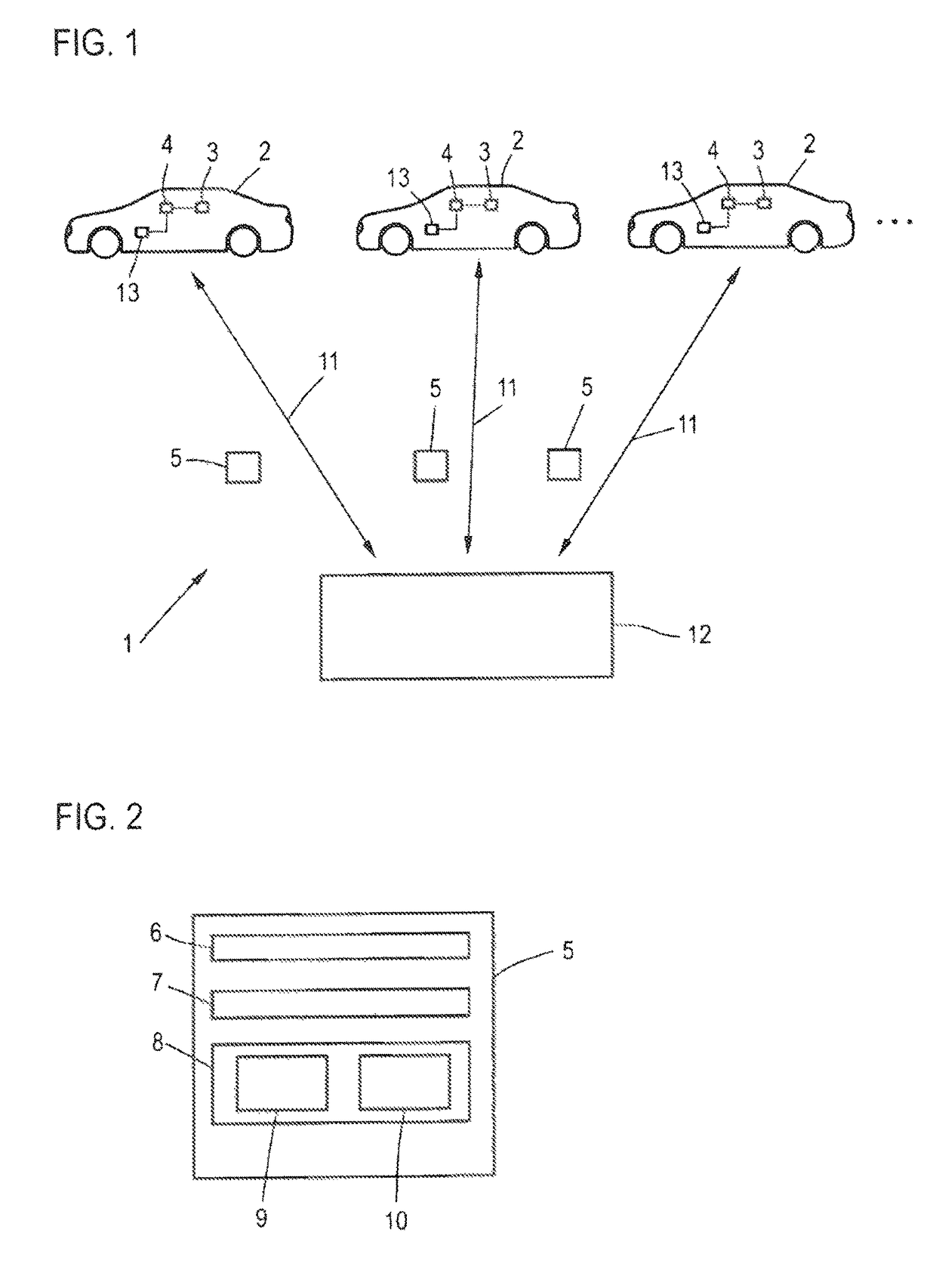Method for determining a spatially resolved extent of error for position finding with a GNSS
a technology of spatial resolution and position finding, applied in the field of spatial resolution extent of error for position finding, can solve the problems of insufficient precision of gnss position provided by conventional gnss receivers, excessively difficult and expensive exact surveying of landmarks, and inability to comprehensively use surveyed landmarks for improving position determination via gnss
- Summary
- Abstract
- Description
- Claims
- Application Information
AI Technical Summary
Benefits of technology
Problems solved by technology
Method used
Image
Examples
Embodiment Construction
[0009]It is therefore the object of the invention, in particular for the preparation of an acquisition of landmarks for a database for the purpose of improving the position finding in a motor vehicle, to provide a robust possibility that can be implemented easily for the ascertainment of a site-dependent precision of the GNSS.
[0010]To achieve this object, according to the invention, a method is provided for determining a spatially resolved extent of error for position finding with a global navigation satellite system for a target area of interest using field data from a plurality of field apparatuses, particularly motor vehicles, each having a receiver for the global navigation satellite system and which are at least intermittently situated in the target area, comprising the following steps:
[0011]ascertainment of at least one field data record comprising a current GNSS position in the target area and an error value associated with said position, by the field apparatuses,
[0012]transm...
PUM
 Login to View More
Login to View More Abstract
Description
Claims
Application Information
 Login to View More
Login to View More - R&D
- Intellectual Property
- Life Sciences
- Materials
- Tech Scout
- Unparalleled Data Quality
- Higher Quality Content
- 60% Fewer Hallucinations
Browse by: Latest US Patents, China's latest patents, Technical Efficacy Thesaurus, Application Domain, Technology Topic, Popular Technical Reports.
© 2025 PatSnap. All rights reserved.Legal|Privacy policy|Modern Slavery Act Transparency Statement|Sitemap|About US| Contact US: help@patsnap.com



